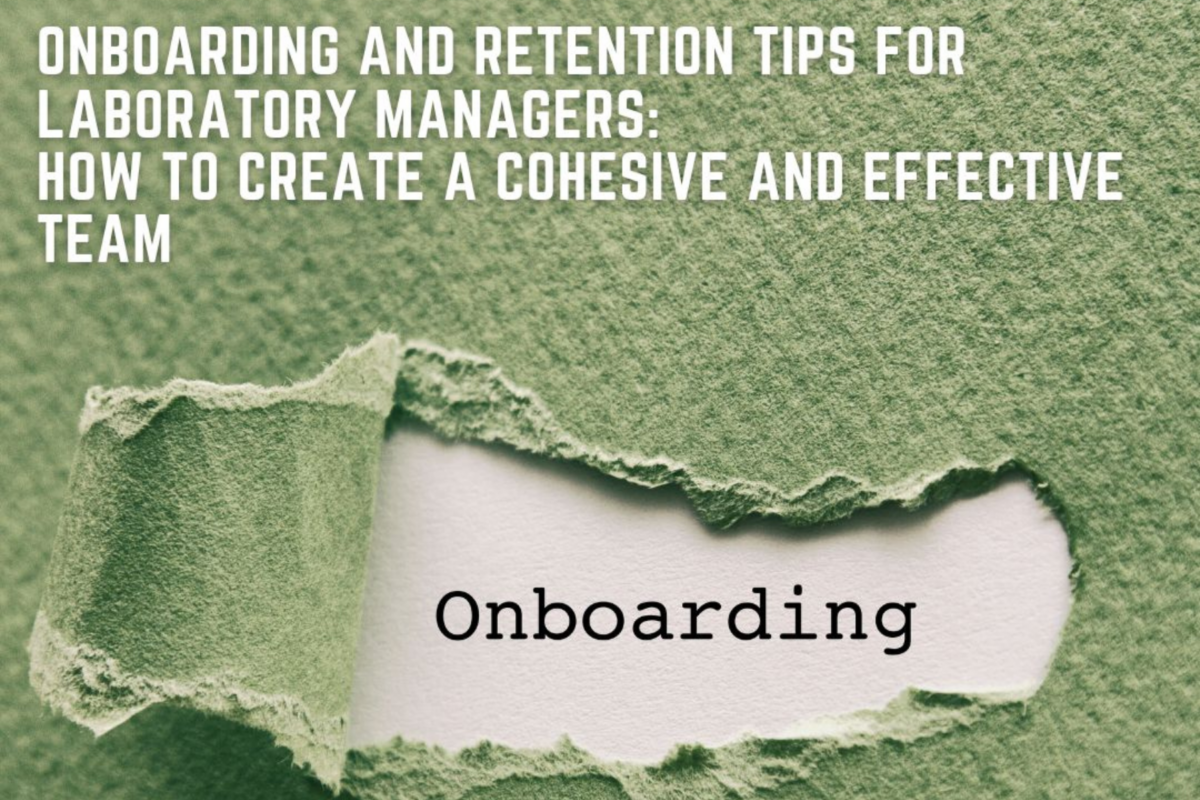As a laboratory manager, your primary responsibility is to oversee the daily operations of your lab and ensure that all tasks are executed with precision and efficiency. However, you also have the critical task of onboarding new team members and retaining your current ones. This is not only important for the success of your lab, but also for the growth and development of your team members. Effective onboarding and retention strategies can help you achieve this goal by ensuring that new hires are integrated smoothly into the team and that current employees feel supported and valued.
In this blog, we will explore some tips and strategies for onboarding and retaining laboratory staff. We will discuss the importance of setting expectations, providing adequate training and feedback, building relationships, and fostering a culture of growth and development. We will also draw insights from experts in the field to provide evidence-based recommendations that you can implement in your lab.
Set Clear Expectations
One of the most critical steps in onboarding new laboratory staff is setting clear expectations from the start. This includes not only outlining job responsibilities but also communicating organizational values and goals. According to a study published in the Journal of Clinical and Diagnostic Research, clear communication of job expectations is a crucial factor in employee retention in laboratory settings. Here are some strategies to consider when setting expectations:
- Provide a roadmap for success: Providing a roadmap for success can help new hires understand how their role fits into the larger organization and what they need to do to be successful. Consider providing a 30-60-90-day plan that outlines specific goals and milestones.
- Communicate organizational values and goals: Communicating organizational values and goals can help new hires understand the culture of the lab and how their work contributes to the success of the organization.
- Conduct regular check-ins: Conducting regular check-ins with new hires can help ensure that they are on track and provide an opportunity for feedback and support.
To ensure that your new hires understand their role and expectations, consider the following strategies:
- Provide a detailed job description: A job description should provide a clear overview of the role, its responsibilities, and its reporting structure.
- Conduct a thorough orientation: An orientation session should cover the basics of the lab, including safety protocols, lab procedures, and organizational values.
- Provide a mentor or buddy: Assigning a mentor or buddy to new hires can help them acclimate to the lab culture and provide a supportive network.
- Set SMART goals: Setting Specific, Measurable, Attainable, Relevant, and Time-bound (SMART) goals can help new hires understand what is expected of them and provide a roadmap for success.
Invest in Training and Provide Constructive Feedback
Investing in training and feedback is critical for onboarding and retaining laboratory team members. Providing the right training and feedback can help employees develop the skills and knowledge they need to be successful and feel valued and supported. Training is essential for the development of laboratory staff, both new and existing. Here are some strategies to consider when investing in training and feedback:
- Provide comprehensive training: Providing comprehensive training can help new hires feel confident in their job responsibilities and contribute to the success of the team. Consider providing a mix of classroom and on-the-job training.
- Offer constructive feedback: Offering constructive feedback can help employees understand where they stand and how they can improve. Make sure that feedback is specific, timely, and actionable.
- Encourage open communication: Encouraging open communication can help build trust and strengthen relationships between team members. Consider holding regular team meetings or one-on-one check-ins to provide an opportunity for open communication.
- Recognize and reward success: Recognizing and rewarding success can help reinforce positive behaviors and motivate team members to continue to perform at a high level. Consider implementing a recognition and reward program that highlights outstanding performance.
Build Relationships and Foster a Positive Culture
Building relationships and fostering a positive culture is essential for employee retention and satisfaction. When employees feel connected to their team and enjoy coming to work, they are more likely to stay with the organization. Here are some strategies to consider when building relationships and fostering a positive culture:
- Encourage teamwork: Encouraging teamwork can help team members feel connected and engaged. Consider holding team-building activities or assigning team projects.
- Celebrate successes: Celebrating successes can help create a positive and supportive environment. Consider recognizing team members for their accomplishments or celebrating team milestones.
- Encourage work-life balance: Encouraging work-life balance can help team members maintain a healthy balance between work and personal life. Consider offering flexible schedules, remote work options, and time-off policies.
- Provide opportunities for professional development: Providing opportunities for professional development can help employees feel valued and motivated. Consider offering training programs, conferences, and mentorship opportunities.
Foster a Culture of Growth and Development
Finally, fostering a culture of growth and development is critical for employee retention and satisfaction. To foster a culture of growth and development, consider the following strategies:
- Offer opportunities for advancement: Providing opportunities for career advancement, such as promotions or lateral moves, can help employees feel valued and motivated.
- Provide professional development opportunities: Offering professional development opportunities, such as training programs, conferences, and mentorship, can help team members enhance their skills and knowledge.
- Encourage employee input: Encouraging team members to provide input and suggestions for process improvement and innovation can help create a sense of ownership and engagement.
- Create a culture of learning: Creating a culture of learning can encourage team members to seek out new knowledge and skills, which can enhance their performance and contribute to the success of the lab.
Conclusion
Effective onboarding and retention strategies are critical for laboratory managers who want to create and maintain a productive and engaged team. By setting clear expectations, investing in training and providing constructive feedback, building relationships and fostering a positive culture, and fostering a culture of growth and development, you can create a cohesive and effective team that will contribute to the success of your lab.
Remember, effective onboarding and retention is an ongoing process that requires regular attention and effort. By following these tips and strategies, you can create a culture of engagement, growth, and development that will benefit both your lab and your team members. Contact us today to learn more!


